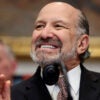Good economic news has been rare enough the past few years that it’s easy to be skeptical when it appears. But data from the Bureau of Labor Statistics say job vacancies, economy-wide, rose 18 percent during the first half of 2014. And Gallup polling data show the same thing: a 20 percent increase in respondents who report that their company is hiring new people.
Labor demand, however, is only one side of the market. Labor supply and other factors matter too. And, regrettably, the increase in job vacancies has not yet translated into equally strong employment or wage growth.
The surprisingly strong vacancy rate raises two questions: Why did it occur in early 2014? And why hasn’t it been accompanied by a concomitantly strong increase in job creation?
Economists at the New York Fed proposed an answer to the first question. The expiration of extended unemployment insurance benefits at the end of 2013, they say, made the job market more attractive for employers by reducing workers’ “reservation wages”–the amount companies need to pay to persuade them to accept the job. Lower labor costs encourage companies to increase hiring.
That’s not just ex post rationalization. A rigorous 2013 paper models and quantifies the mechanism, and it predicts an increase in job vacancies of roughly the amount that occurred this year. The New York Fed hypothesis would also help explain why wage growth has been so weak in 2014.
But the New York Fed researchers’ model also predicts more hiring than we’ve seen. So the second question remains unanswered.
The vacancy data give reason to hope that employment will pick up and that the U.S. economy will finally recover from the “recovery.”
Originally appeared in the Wall Street Journal.































